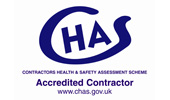Shrinkage Cracking And Curling In Floor Screeds
Shrinkage Cracking And Curling In Floor Screeds, What Are These And How Do They Occur?
I’m Andy Parkin, Managing Director of the Multi-Award-Winning Speed Screed. I’m here today to answer one of the most popular questions that we get asked. And that is “shrinkage cracking and curling in floor screeds. What are these and how do they occur?”
Shrinkage Cracking In Floor Screed
They are interesting phenomenons, and something that lots of screeds will actually experience.
If we take shrinkage cracking first, any material with water in will shrink as it dries. A sand and cement screed, as it dries it will shrink, and if you haven’t prepared for that shrinkage, the screed may actually crack at the weakest point. And you have shrinkage cracking.
As the screed shrinks it builds up stress, and then looks to release that stress at the weakest point within the screed. Typical shrinkage cracking occurs in the following positions:
- Across doorways
- Across the centre of a large room
- Where you have restraints in the screed such as columns.
- Re-entrant corners
You will find that shrinkage cracking will take the path of least resistance. The weakest point is where you are likely to find shrinkage cracking, the screed has effectively jointed itself.
Screed Left To Its Own Devices
The screed could be laid and left to it’s own devices, and effectively it will joint itself, or alternatively, what you can do is to minimise the risk of that shrinkage cracking, and also tell it where you would like it to crack.
In sand and cement screed, we would always add polypropylene fibres to help minimise shrinkage cracking. It is to “minimise” shrinkage cracking, and there is no guarantee it will be eliminated.
Stress Relief Joints
Stress relief joints need to be used to reduce the bay sizes, and again minimise the risk if shrinkage cracking.
These joints are normally just a trowel cut into the screed, and weakening the screed. You are basically telling the screed where you want it to crack. As defined by the British Standard, this is standard talks about 40m2 in a traditional sand and cement screed. Assuming that there is going be an aspect ratio of no more than 2:1. If it is 2:1, the more elongated it is, the smaller the m2 that you will be able to use in a bay. If you have restraints, re-entrant corners, it reduces the base size required.
Should I Worry If I have Shrinkage Cracking?
Shrinkage cracking, by itself, isn’t anything to particularly be concerned about if you have them. You may have hairline cracks, which you would not generally look to repair. Depending on what the floor coverings are, you may or may not look to repair.
A heated screed might just change your perspective, as the screed will be expanding and contracting as it heats and cools. The shrinkage cracking would be opening, and closing, and therefore that might be a factor.
Curling In Floor Screed
Curling is really an interesting phenomenon. It is where you experience curling and what they call “lipping” of the screed. It generally occurs in floating construction, on acoustic or thermal insulation.
I liken it to putting a slice of bread on the on a plate in the kitchen. Leave it for a day or so, and you will find that it starts to curl. That is because it is drying from one side quicker than the other side, so the curling process starts. That is exactly what happens with curling in floor screed.
What you can done to minimise this? Mesh can be placed across the joints, which is where the curling in floor screeds takes place.
Mesh would be placed either side of the day joint, and that should minimise the risk. Brick ties can be used for the same application. The brick tie is set into the screed , and then when work starts the next day the new screed can be “tied” in.
Using either method is not a guarantee of preventing shrinkage cracking, and curling in floor screeds, but it will certainly minimise it.
That is shrinkage cracking and curling in floor screeds. Both phenomenons, can be easily repaired if required, and is not something that is insurmountable if you experience either one of them. It is not something that requires you to rip the screed out, and replace.
I hope that’s been of help. If you need any further information on shrinkage cracking and curling in floor screeds, just let me know.
Our Accreditations
About Speed Screed
Speed Screed Limited was founded on the key principle of providing first-class customer service. It has since built itself an impressive reputation for delivering high-quality projects across the United Kingdom.
The company’s success is built on its belief in quality work, attention to detail, on-time completion, strong working partnerships and the recruitment of top-level staff. about us >








